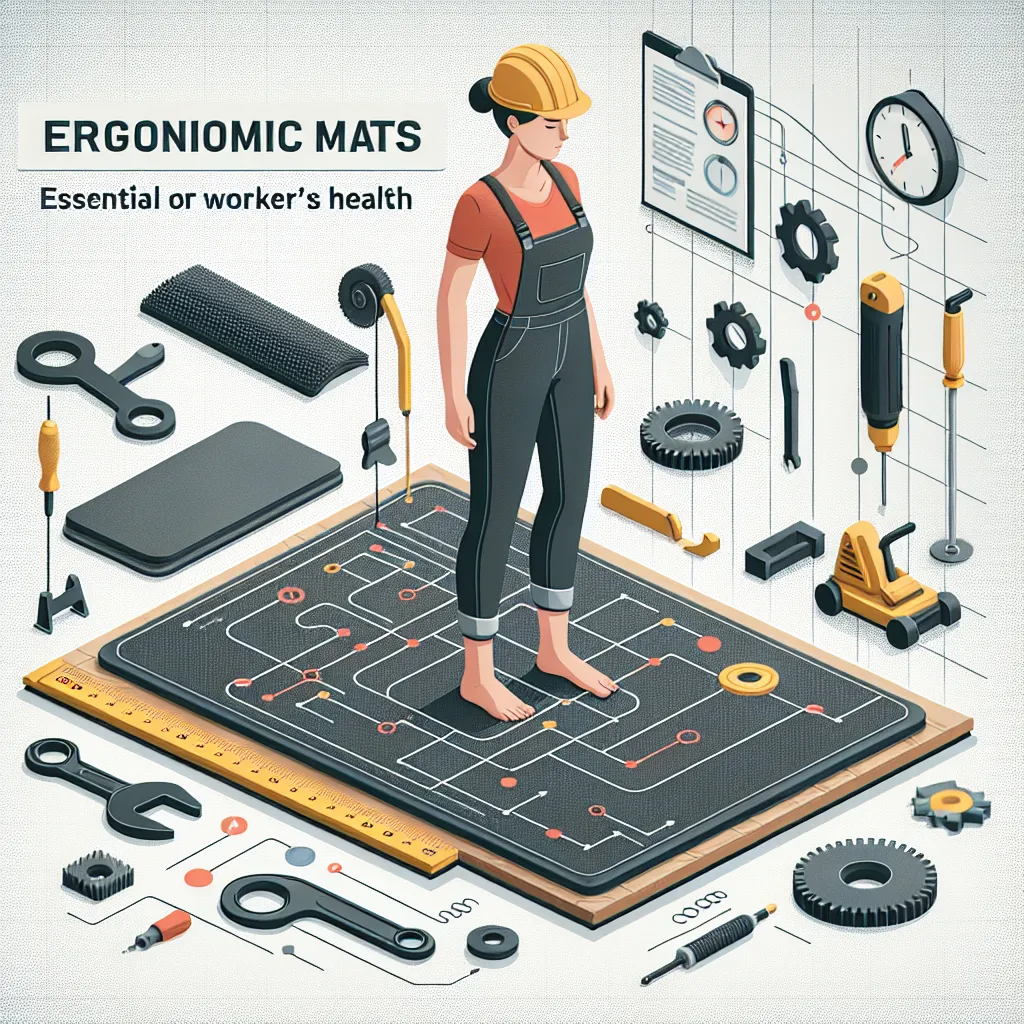
Understanding the Benefits of Using Mats
Importance of Safety Mats in the Workplace
Safety mats play a crucial role in ensuring a secure and risk-free environment in the workplace. These mats are designed to provide employees with a stable and slip-resistant surface, reducing the likelihood of accidents and injuries. Whether it’s an industrial setting, a commercial kitchen, or a retail space, the importance of safety mats cannot be overstated. By investing in high-quality safety mats, employers can demonstrate their commitment to the well-being of their staff and customers.
One of the key benefits of using safety mats is the prevention of slip and fall accidents. These types of accidents are among the most common workplace incidents, often leading to serious injuries. Safety mats with anti-slip properties create a secure footing for employees, especially in areas prone to wetness or spillage. Additionally, ergonomic mats provide cushioning for employees who stand for extended periods, reducing fatigue and minimizing the risk of muscular strain.
Furthermore, safety mats also contribute to maintaining a clean and hygienic workplace. In food-related industries, anti-microbial and grease-resistant mats help to uphold sanitary standards, ensuring a safe environment for food preparation and service. This not only protects the well-being of employees but also upholds the reputation and compliance of the business with health and safety regulations.
In conclusion, the utilization of safety mats is an essential aspect of creating a secure and healthy work environment. By prioritizing the implementation of safety mats, employers can mitigate the risk of accidents, promote employee well-being, and uphold industry-specific regulations. Investing in the right safety mats demonstrates a commitment to safety and enhances the overall efficiency and morale of the workforce.
Advantages of Anti-Fatigue Mats for Standing Workers
Understanding the benefits of using mats in the workplace is vital for ensuring the health and wellbeing of employees, particularly those who spend long hours standing. One of the key advantages of anti-fatigue mats for standing workers is the reduction of discomfort and fatigue that often accompanies prolonged standing. These specialized mats are designed to provide cushioning and support for the feet, which helps to alleviate pressure on the legs and lower back. By minimizing the impact of standing on hard surfaces, anti-fatigue mats can contribute to preventing musculoskeletal disorders and improving overall comfort for employees.
Benefits of Entrance Mats for Maintaining Cleanliness
Entrance mats play a crucial role in maintaining cleanliness and safety in commercial and residential spaces. These mats are specifically designed to trap dirt, moisture, and debris from footwear, preventing them from being carried further into the building. By effectively capturing these contaminants, entrance mats help in reducing the risk of slips and falls, while also preserving the cleanliness of interior flooring surfaces.
One of the key benefits of entrance mats is their ability to minimize the amount of dirt and moisture that is tracked indoors. This not only contributes to a cleaner and more presentable indoor environment, but also reduces the need for constant cleaning and maintenance of floors. By trapping dirt and moisture at the entrance, these mats act as the first line of defense against outdoor elements, thus preserving the quality and appearance of interior flooring surfaces.
Furthermore, the use of entrance mats can lead to cost savings for businesses and homeowners. By preventing dirt and moisture from being spread throughout the building, these mats can help in prolonging the lifespan of flooring materials and reducing the frequency of professional cleaning services. This not only translates to lower maintenance expenses but also contributes to a healthier indoor environment by minimizing the presence of allergens and pollutants.
In addition, entrance mats can also enhance the overall aesthetic appeal of a space. They are available in a variety of designs, colors, and sizes, allowing them to complement the existing decor and contribute to a more welcoming atmosphere. Whether it’s a commercial building or a residential property, entrance mats serve as functional yet aesthetically pleasing additions that make a positive impression on visitors and occupants.
Overall, the use of entrance mats offers a range of benefits, including improved cleanliness, safety, cost savings, and aesthetic enhancement. By investing in high-quality entrance mats, businesses and homeowners can effectively manage the impact of outdoor elements, promote a cleaner indoor environment, and create a more welcoming and appealing space for everyone.
Role of Yoga Mats in Enhancing Comfort and Stability
Yoga has been practiced for centuries as a means of maintaining physical, mental, and spiritual well-being. One of the key elements of a successful yoga practice is the use of a high-quality yoga mat. These mats play a crucial role in enhancing comfort and stability during yoga sessions.
Yoga mats provide a supportive and cushioned surface that helps practitioners maintain proper alignment and posture during various asanas and poses. The non-slip texture of the mat ensures that practitioners can hold their poses without the risk of slipping or sliding, thereby enhancing stability and reducing the likelihood of injury.
Furthermore, the use of yoga mats creates a personal space for practitioners, both physically and mentally, allowing them to focus on their practice without being distracted by the hardness or coldness of the floor. This sense of personal space can contribute to a deeper and more fulfilling yoga experience.
When considering the benefits of using mats in yoga, it’s clear that these versatile accessories are essential for practitioners of all levels. Whether in a studio or practicing at home, a yoga mat provides the necessary comfort and stability to support a fulfilling and safe yoga practice.


